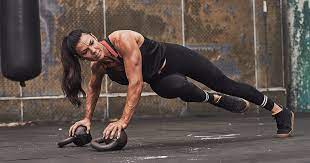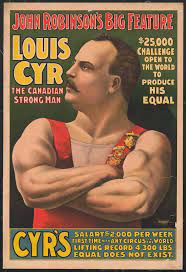Let’s Get Physical
The fitness world has displayed its fair share of crazes and fads, from Jazzercise to exercise machines that did the work for you. The history of physical fitness has changed with religion, culture, and the rise of organized sports.

Early athletes
Being fit wasn’t a personal choice for much of human history but a necessity. Early humans didn’t have the choice of sitting at a desk all day. If they wanted to eat, they had to hunt with spears or spend time searching and gathering fruit and nuts. Before cultivating grain, humans performed various exercises while hunting and gathering; running, jumping, crawling, and balancing. It wasn’t until the repetitive motions of grain cultivation did our physical activity become more limited.
In the Neolithic period and the Bronze age, a few thousand years later, more varied movements became prevalent again. War and the rise and fall of many regimes led to more emphasis on physically training one’s body. Babylonians, Persians, Egyptians, Greeks, and Romans imposed physical training on their young men to prepare for battle.
It wasn’t until the creation of the modern Olympics in Greece that the culture of sports became prevalent. Besides the Olympics, which contained primarily activities with practical movements like javelin throwing, there were also sports competitions in Egypt. Later on, there were the infamous gladiator competitions in Roman society. Despite the culture of sports becoming prevalent, most physical activity in the ancient world revolved around battle skills. The earliest record of a non-fighting team sport is the ancient Mesoamerican Ball game Pok-A-Tok or Pitz. Players use any body part except their hands to pass a hard rubber ball through a small stone ring at the top of a stadium wall.

Rejection of the Body
Amidst the chaotic succession of empires and kingdoms during the middle ages, the idea of physical health became taboo. The religious teachings of Catholicism taught that one’s primary goal should be to prepare for the afterlife; thus, the physical body on earth was seen as an abomination and sinful. Because of this, the idea of excess food consumption was blasphemous. The only individuals to receive any physical training were nobles and mercenaries exclusively for the purpose of battle, and the physical well-being of the body was abandoned entirely.

Rejuvenation of the Renaissance
However, much of that changed during the renaissance, and the physical body became something to take care of once more. Michelangelo’s David and Leonardo Da Vinci’s Vitruvian Man promoted much intrigue around anatomy and physical health.
The Italian Humanist, Vittorino da Feltre, opened a school in 1420 that emphasized physical activity. His school followed the Greek idea that the improvement of the body aided in the improvement of the mind as well, and the school became a blueprint for boarding schools across Europe.
A hundred years later, in 1553, Spaniard Cristobal Mendez published the first book surrounding the benefits and effects of physical education. El Libro del Ejercicio Corporal y Sus Provechos classifies and describes different exercises, sports, and games from a medical standpoint. In addition, Mendez elaborates on ideas and techniques to get over physical restrictions and injuries. Sixteen years after El Libro del Ejercicio Corporal y Sus Provechos, the medical book De Arte Gymnastica by Italian physician Mercurialis combined his studies of both classical literature and medical knowledge and is largely considered the first outline of physical therapy.
As We Know it Today
The ideas of professional sports in western culture first became prevalent in the early Victorian era and normal by the first world war. Since then, hundreds of different leagues for hundreds of different sports have become commonplace in society today. But it wasn’t just team sports that have boomed in the last 150 years. Personal fitness has also experienced a massive boom, from the classic strongmen of the circuses in the late 19th century to the infamous jazzercise of the 80 to the fitness bands we wear every day. Ways to get fit change as fast as the seasons.

The most recent Dietary Guidelines for Americans (DGA) recommend that adults get 150+ minutes of moderate to vigorous physical activity each week. And children should be getting 60+ minutes per day. A great way to tell if you are exercising at a moderate to vigorous level is to try the Talk Test. If you can talk to someone while exercising without getting out of breath, BUT cannot sing without getting out of breath, then you are exercising at a moderate level! You should work a bit harder if you can hold a conversation but can also sing without getting out of breath. Try out the Talk Test next time you engage in physical activity and see what level you are working at!

By: Timandra Rowan
Sources:
US News: The Evolution of Fitness Trends
Washington Post: Iconic Fitness Trends
Art of Man: The History of Physical Fitness
Want more? Check out other topics on the ¡Viva Bien! Blog:
